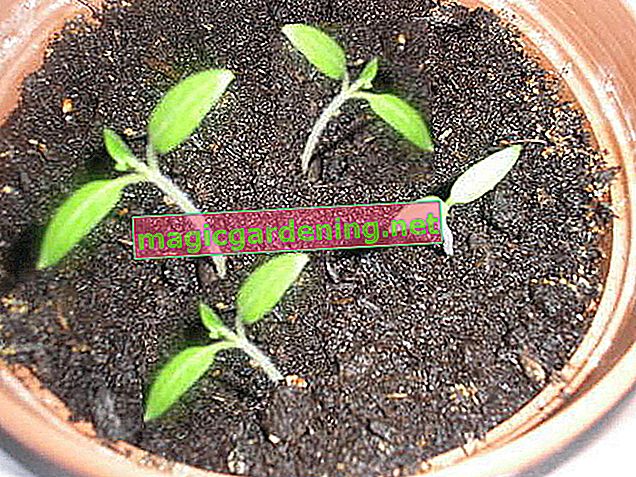
Growing and pricking made easy
On the sunny windowsill, cultivation begins in March by sowing. After the seeds have soaked in water or chamomile tea for a few hours, they are sown in poor substrate. The light germs are given a wafer-thin layer of sand or earth so that they can be gently moistened. Pampered with warm temperatures of 20 to 24 degrees Celsius, they germinate within 10 to 14 days.
also read
- Planting tomatoes correctly - instructions for beds and balconies
- Planting tomatoes yourself - from A for sowing to Z for growing
- Growing moss yourself - instructions for 3 simple methods
So that the seedlings do not die off, they move to a cooler and at the same time lighter place. The plants are pricked out as soon as the second pair of leaves appears. Carefully transplanted into individual pots with nutritious soil, growth now progresses rapidly. During this phase, the seedlings must neither dry up nor be drowned. They can't stand full sun yet.
Plant and care for them professionally
After the cold days around the ice saints, it's time to go outdoors. In the sunny location, the bedding soil and the pail substrate are enriched with compost. Plant the young tomatoes deep enough so that the soil reaches the lower leaves. Keep an eye on a planting distance of 60-80 centimeters. A climbing aid supports upright, stable growth right from the start. The main care factors are:
- water regularly without wetting the foliage
- From the second week onwards, fertilize organically every 14 days
- Every few days throughout the season, weed out any superfluous side shoots
- Break out competitive instincts to the trunk at the base
- Permanently attach long tendrils to the climbing aids
- repeatedly mulch within 10 centimeters of the root neck
Reliable rain protection is of central importance. If there is no place for tomatoes in the greenhouse, cover the plants with a tomato house or a special hood. Otherwise there is a risk of late blight with every rain shower.
Pollinate in the greenhouse and on the windowsill
Busy bumblebees and bees do not get to the flowers of tomato plants in closed rooms to act as pollinators. The hobby gardener takes on this function. Immediately after flowering, the plants are shaken at noon. Alternatively, you can stroke the flowers with a brush so that the pollen is distributed for fertilization.
Tips & Tricks
Do not throw away the stripped parts of tomatoes. Dried and burned, they make an excellent fertilizer for next year growing. The ash is particularly rich in potassium. Tomato plants need this nutrient even more urgently than nitrogen, because it promotes fruit formation.








